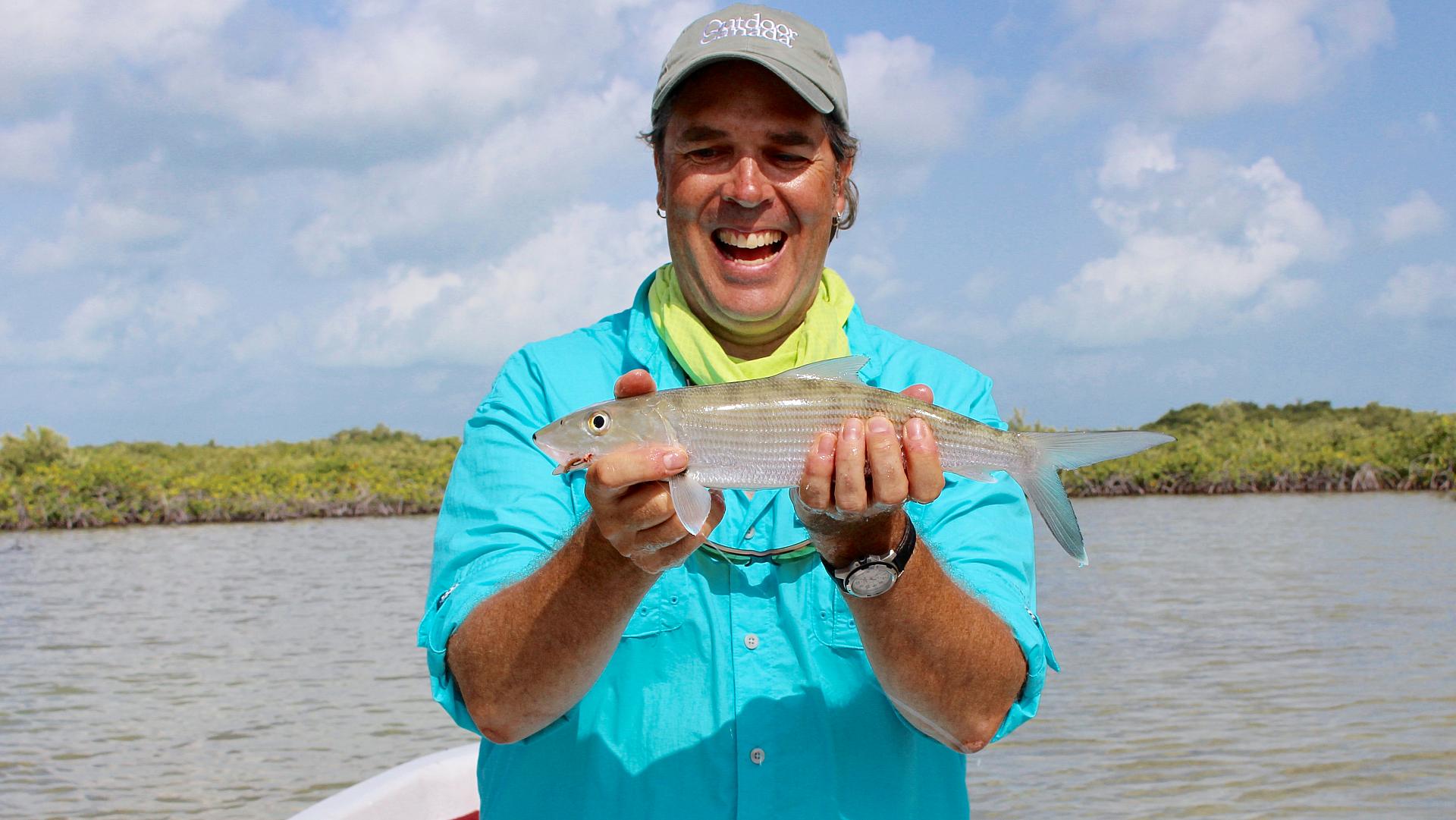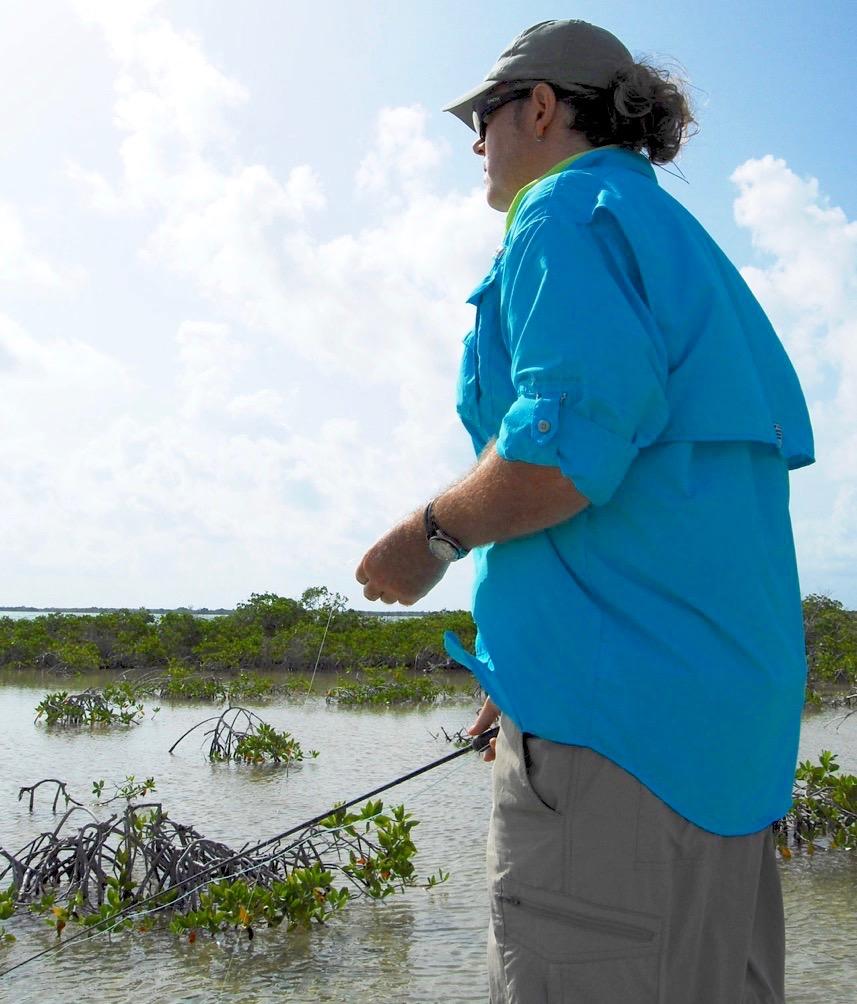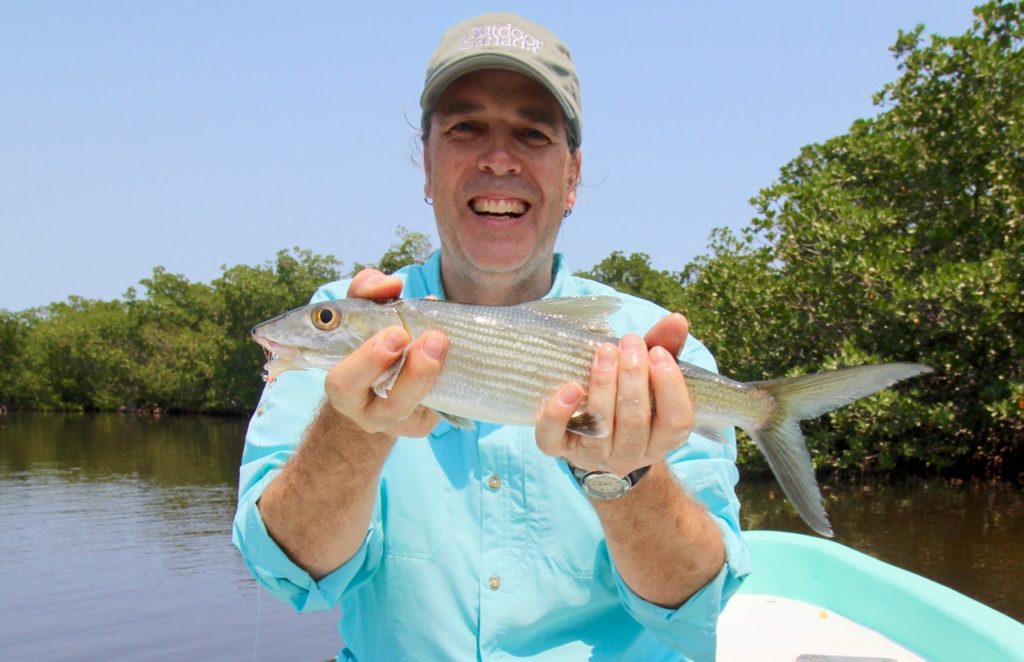Game of bones
Do you dream of fighting the fabled bonefish on the fly? In the tropical paradise of Mexico's Yucatán Peninsula, it’s easier than you might think.
Advertisement
Hone Your Skills
Honestly, you can be a mediocre or even a sloppy fly caster and still be a terrific trout angler. That is not the case with saltwater fishing. Brushing up on your casting is by far the most important aspect of preparing for flats fishing. Sight-fishing for bones requires a few unique skills, but with practise, any competent angler can learn them. If you do not prepare—and I cannot emphasize this enough—you will have a lousy, frustrating fish-challenged trip.
Advertisement
To start, line management and learning to cast from the “ready position” are just as important as pure casting skill. The ready position (below) describes the way you set up on the casting deck as you wait for your shot. Since you can deliver a cast much faster if you’re not pulling line off the reel, you start by stripping off 40 to 60 feet of line (as much as, but not more than, you can confidently cast). Then dump out the line, strip it in and pile it on the deck. This leaves the front of the line on top of the pile, preventing tangles. Keep about a rod’s length of line outside the tip, and hold the fly in your non-casting hand. When you spot a target and start moving the rod back to cast, pass the fly under your rod hand and release it into your initial backcast. This is awkward to describe, but not difficult to do.
Flats fishing is much more about speed and accuracy than distance. You are usually casting to an incoming fish, so you need to quickly get a fly in its line of sight. That translates into hitting a target the size of a bath towel 30 feet away with at most two false casts, in roughly 10 seconds. If you can do the same at 40 or 50 feet, you’ll double your catch. Oh, and you’ll need to do all that in 20-kilometre winds.
Advertisement
Although I’ve fly fished since I was 15, I could not do any of this before going to Mexico. But knowing that was half the battle, and I specifically practised hitting targets fast, from the ready position, in heavy wind. As I’ve written before, you’ll be shocked by how regular practice dramatically improves your casting. After a dozen 30-minute sessions in the months before my trip, for example, I had the chops.
One joy of flats fishing is that you have lots of obstacle-free room in which to cast—an ocean of it, in fact. That means you can deal with unfavourable wind by laying down your backcast or sidearming, which are other skills worth practising. For more help, check out the many excellent instructional videos on YouTube.
Advertisement



